Guadix, in the Granada Geopark in Granada province, Andalucia, Spain was known as Acci in Roman times. It has the largest concentration of cave dwellings in Europe
By Nick Nutter | Updated 18 Mar 2023 | Granada | Villages |
Login to add to YOUR Favourites or Read Later
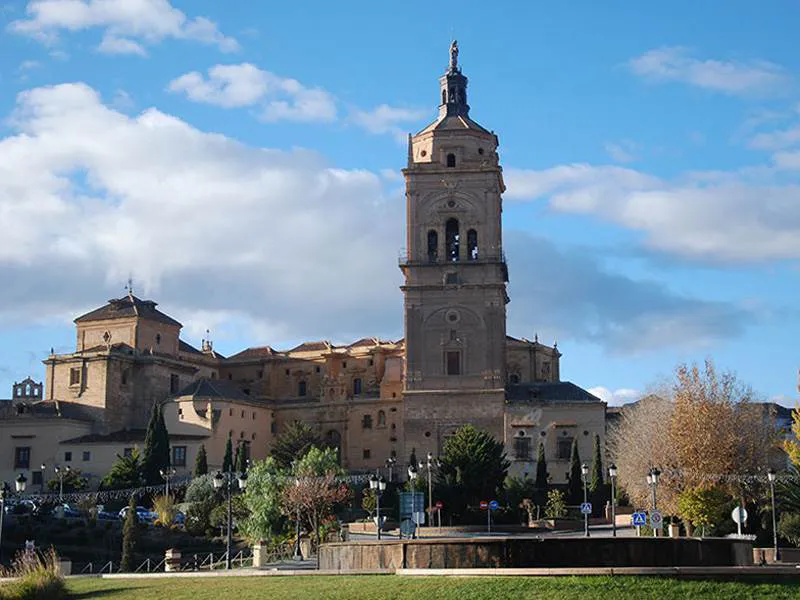
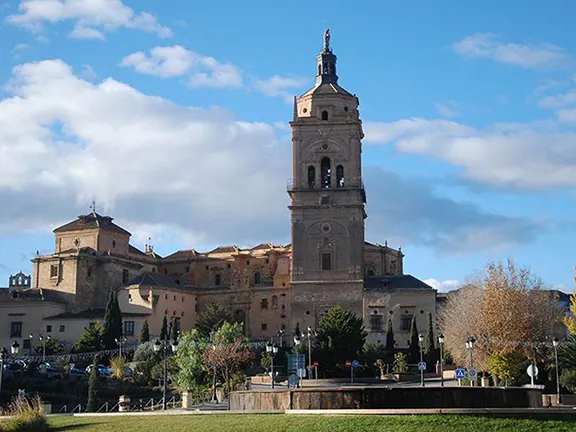
Catedral de la Encarnación de Guadix
Guadix is well off the beaten tourist track yet only 60 kilometres from Granada. It also happens to be at the southwestern end of an area that has been designated the Geoparque Granada due to the area’s abundance of prehistoric remains, fossils and geological phenomenon together forming an area of exceptional scientific and educational value. Guadix is the perfect place to stay to explore the heart of Europe’s most southerly desert. Relatively unknown today, it is likely to creep into the news next year (2020) when an application is due to be made to have the Geoparque registered as a UNESCO World Heritage Site.
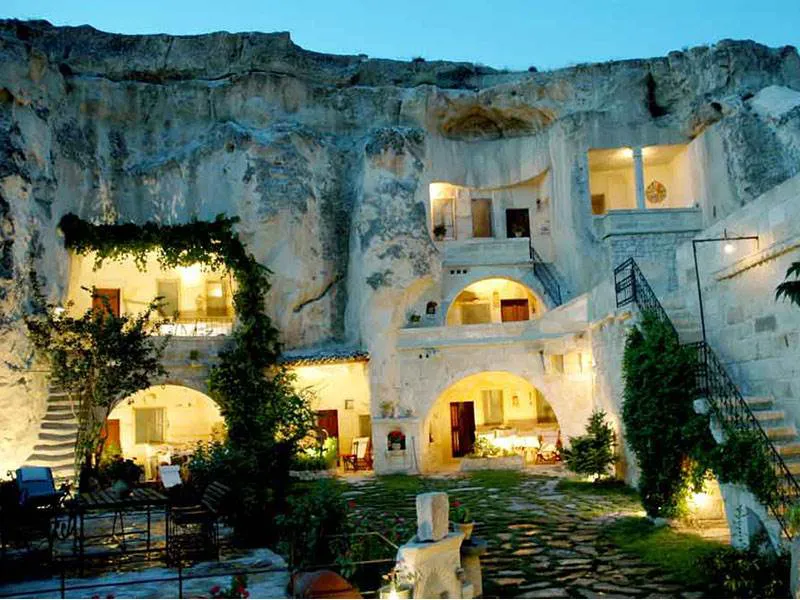
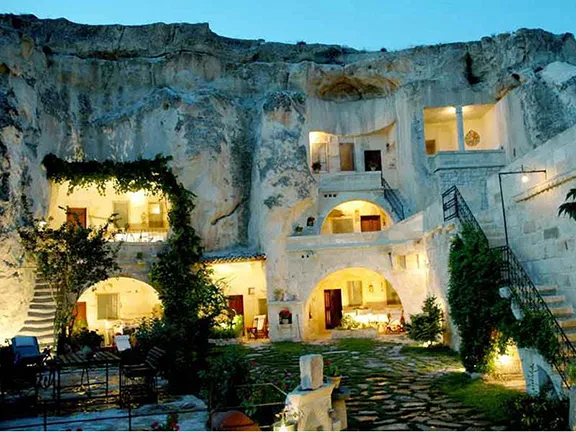
Barrios de Cuevas
Its ancient origins seem apparent when you enter the town, and you see, for the first time, the cave houses hewn from the living rock, a soft tufa. Front doors and windows are flush with the rock and chimneys sprout through the rock metres behind. Over 2000 cave dwellings house half the population of Guadix, the largest concentration of cave dwellings in Europe. Yet this impression is erroneous. Most of the caves are, for this area at least, (traces of humans dating back at least 140,000 years have been found here), fairly recent.
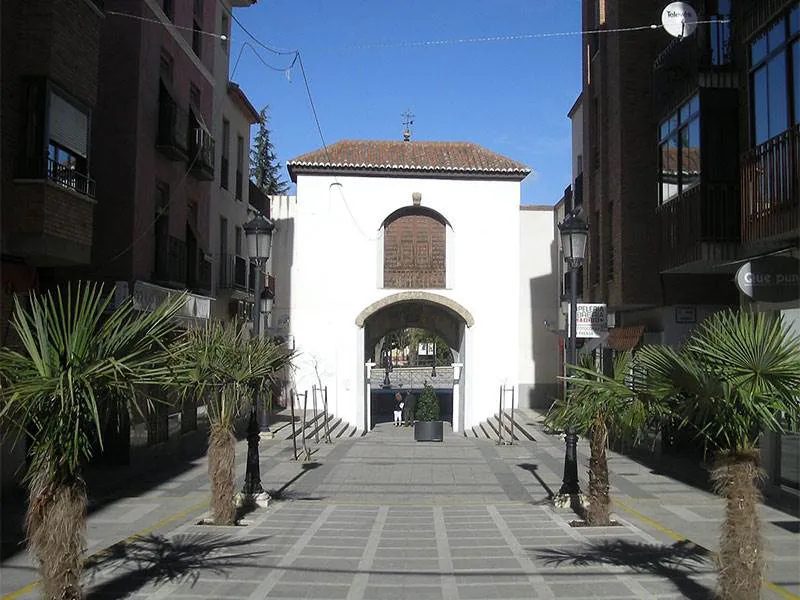
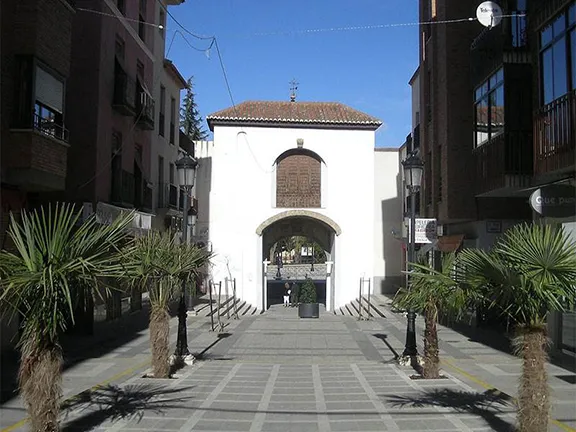
Puerta de Torcuato
Any present-day cave dweller, or trogloditas (troglodytes) as they are known in Guadix, will tell you that a cave stays the same temperature, 18 degrees C, all year; cool in summer and warm in winter. At a height of over 900 metres above sea level, Guadix is situated in a hollow or hoya, surrounded by mountains. It is ferociously hot in summer and bitingly cold in winter. The inhabitants need all the help they can get staying cool in the summer and warm in the winter. The benefits of living in a cave in modern times seem to have been realised soon after the Moors took over. The oldest dwellings date back 1,000 years. The majority though are more recent. After 1492, when the Catholic monarchs regained control of Andalucia, many of the Moors were displaced from Granada and turned up in Guadix. With no homes to go to and no money, they had little choice but to dig their own cave. More people arrived between 1568 and 1571; Moriscos displaced during the War of the Alpujarras, they too created homes in the rock.
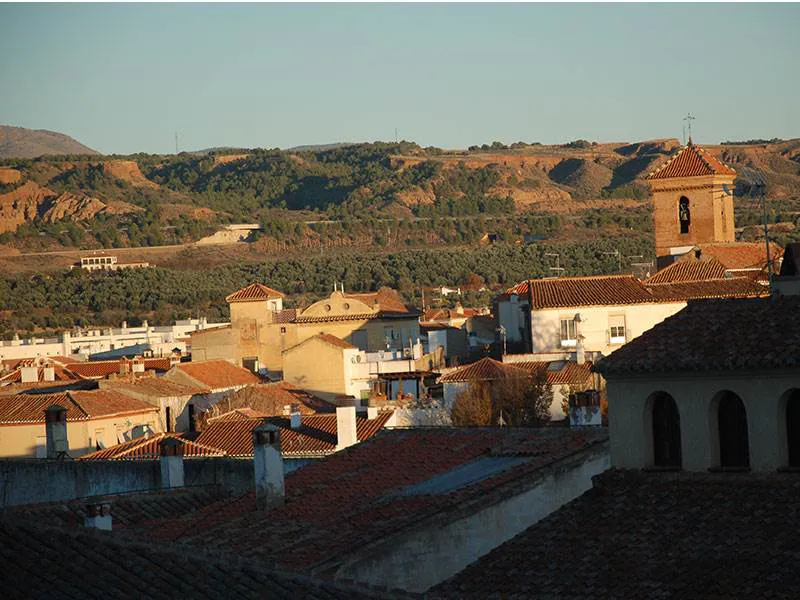
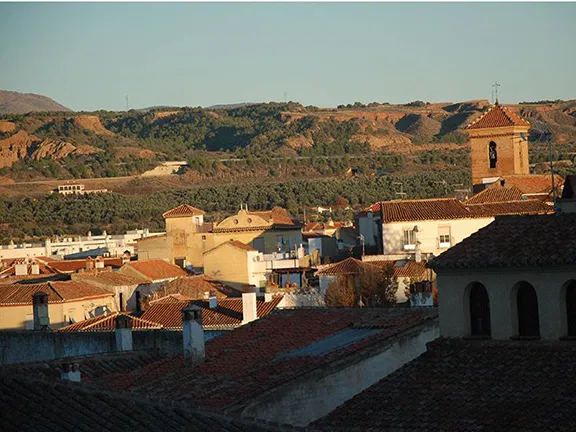
Guadix at subset
But we are ahead of ourselves. For many years the inhabitants of Guadix have associated themselves with a Roman town called Julia Gemelia Acci founded by Julius Caesar in 45 BC as a base for two of the legions that had supported him during the wars with Pompey. Experts believed the actual location of Acci was 6 kilometres northwest of Guadix at a place called Guadix el Viejo.
Just before the turn of the 20th century, renovation works within Guadix itself started to reveal Roman remains; foundations of a bastion, a bust of Emperor Trajan, a Corinthian capital, traces of a large building and parts of a sewerage system. Suspicions were raised that perhaps Acci had, after all, been at Guadix. Then, on the 4th July 2007, work on an underground car park just below the cathedral was stopped when an ancient wall was discovered. The wall was only a small part of what turned out to be a Roman theatre, rather a grand theatre at that. The theatre was dated to the 1st century AD. Confirmation that Guadix was Acci, the locals had it right all along.
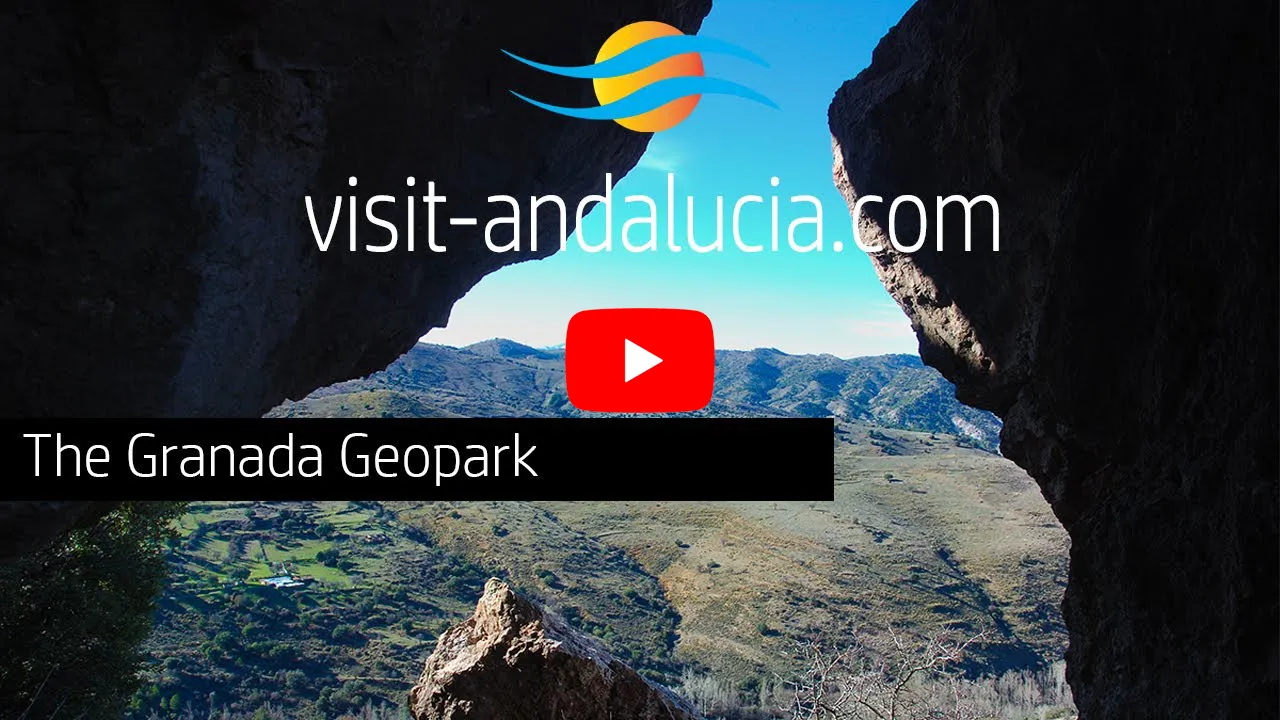
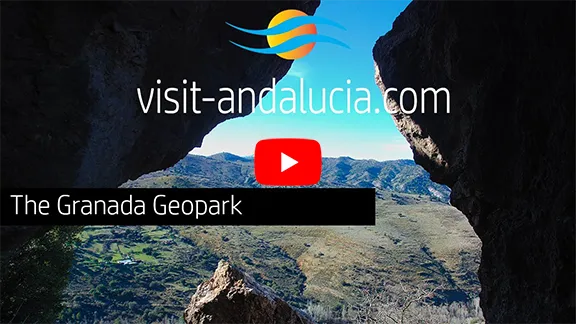
Video By: Julie Evans
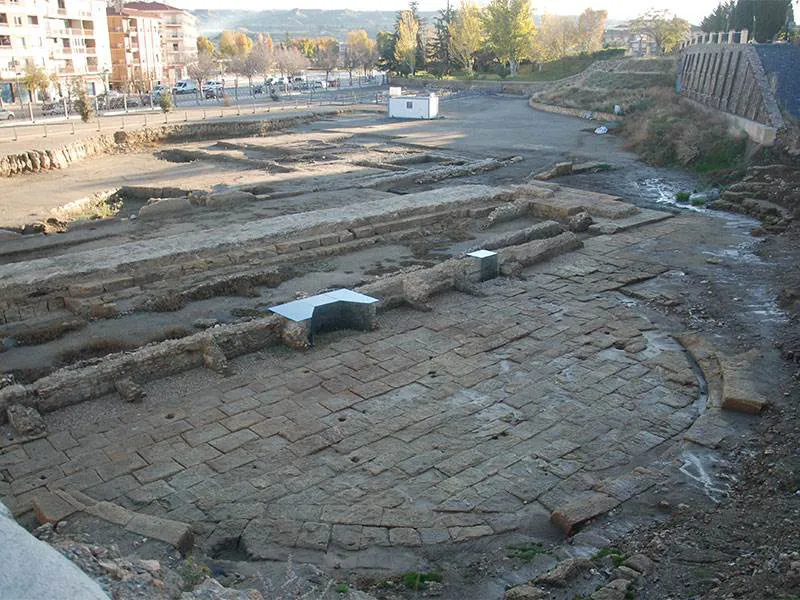
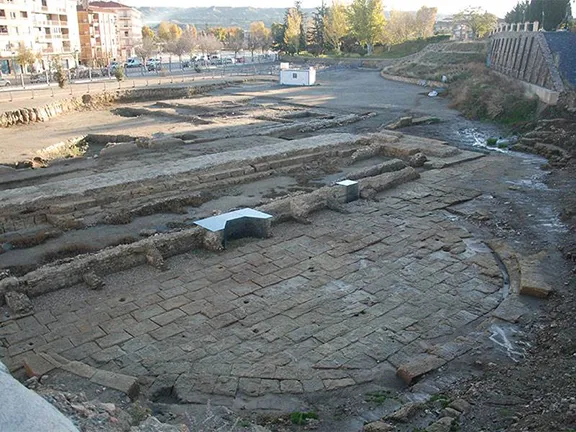
Roman Theatre - Julia Gemelia Acci
The Moors arrived and built an Alcazabar and walls, still visible today rising above the mediaeval houses of the old town. The Puerta de Torcuato survives to take you from the old town, through the mediaeval wall to the new town. Those walls came in useful in 1362 when, at the Battle of Guadix, a Castilian army was routed by Granadian forces loyal to Muhammed VI, Sultan of Granada.
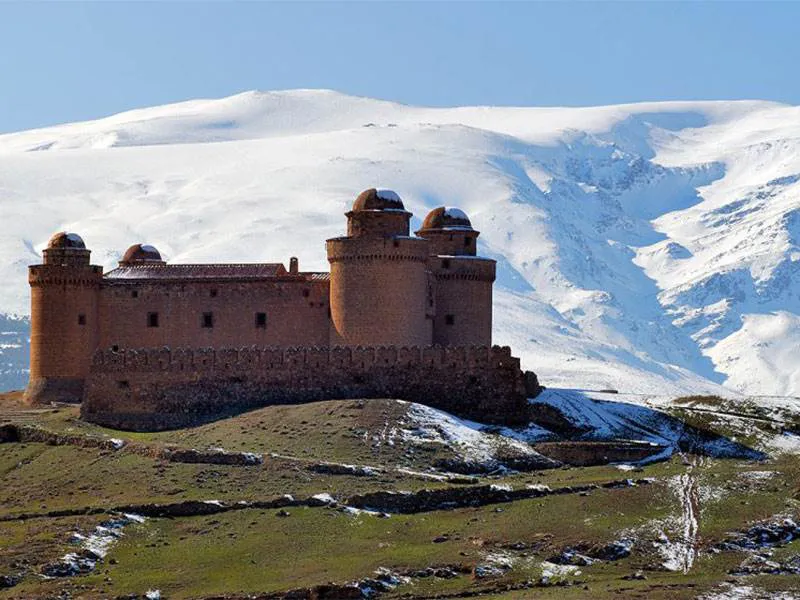
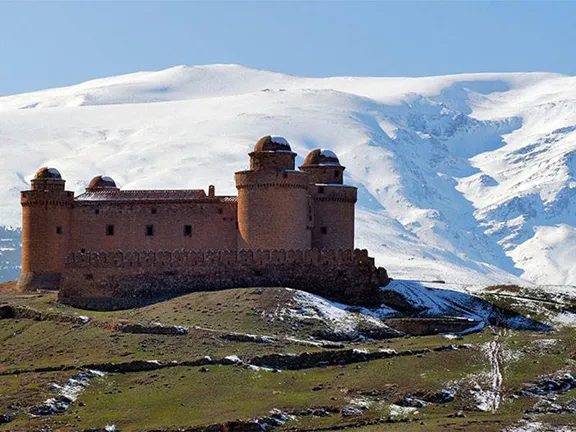
Calahorra Castle
Guadix surrendered without a siege to the Christian monarchs in 1489. The structure of the town was left untouched to be appreciated today. Below the city walls is the cathedral, the Catedral de la Encarnación de Guadix. Tradition has it that Guadix is the oldest diocesan seat in Spain, founded by Saint Torquatus of Acci in the 1st century AD. The cathedral is on the site of a Hispano-Visigothic church that, during the Moorish period, served as a Mosque. From its inception in 1549, Guadix cathedral was going to impress. It took 200 years to build this monument that contains elements of Gothic, Renaissance and Baroque styles. The façade is possibly the best example of Baroque architecture in Andalucia. The list of architects that contributed to its build through the ages is a roll call of the most prominent episcopal designers in Spain during the 16th, 17th and 18th centuries; Diego de Siloé, Francisco Roldán, Francisco Antero, Blas Antonio Delgado, Vicente Acero, Gaspar Cayón de la Vega, Fernández Pachote and Domingo Thomas.
On to more modern times. While strolling around Guadix, you may wonder at the carefully placed, and maintained film director’s chairs. There are six in total; one near the cathedral, one next to an old sugar factory just outside town, another at the railway station, one at the Gate of Torcuato, another in Santiago Square and the last at the mirador in the Barrio de las Cuevas. Since 1924, various aspects of Guadix have appeared in dozens of films. Film directors have appreciated the varied landscapes, historical heritage and culture of the area. Spaghetti westerns are well represented with ‘The Good, the Bad and the Ugly’, and ‘For a Few Dollars More’. Later films include ‘Indiana Jones and the Last Crusade’. The latest is a film called ‘Karol’, based on the youth of Pope John Paul II, filmed in 2005. The one movie you would not expect to see represented here in this desert landscape is one set in Russia, the 1965 classic, Dr Zhivago.
The book, ‘Dr Zhivago’ had been banned in Russia so on-location filming there was not allowed. The Director, David Lean, had filmed part of ‘Lawrence of Arabia’ at Carbonaros in Almeria province in 1962, and he guaranteed snow in some parts of Spain. It had snowed heavily in the Guadix area that year. Unfortunately for Lean, 1965 proved to be the hottest winter in the area for 50 years, no snow. Much of the film was made at a Moscow set built outside Madrid. ‘Snow’ was manufactured from crushed marble. However, Guadix came into its own for one scene. The scene was shot at the nearby Castle Calahorra with the magnificent, snow-covered, Sierra Nevadas in the background.
A geoparque (geopark or geoparc) is a well-defined territory, home to a valuable natural geological heritage. The most important parts of a geoparque, due to their scientific, aesthetic, or educational value, are called geosites.
In the north of Granada, surrounded by some of the tallest mountains of the Iberian peninsula, what we know today as the Basin of Guadix or the Guadix - Baza depression or basin was, for 5 million years, a lake with no outlet to the sea. Sediments, brought down by the mountain streams, were deposited in the basin in horizontal sheets. 500,000 years ago the basin drained to the west and new streams carved out the canyons, ravines and badlands that characterise the area, the most southerly desert in Europe, today.
Guadix is a geosite within the project by virtue of its cave dwellings